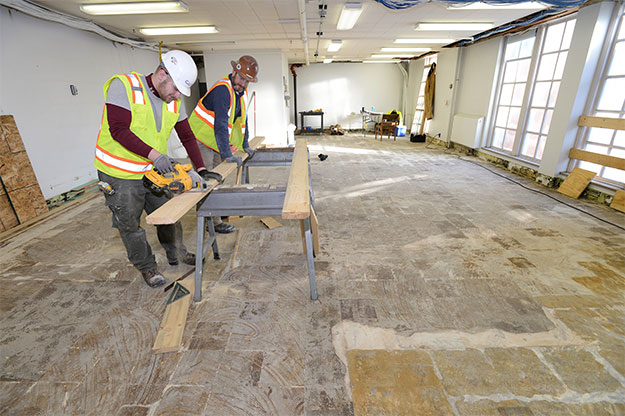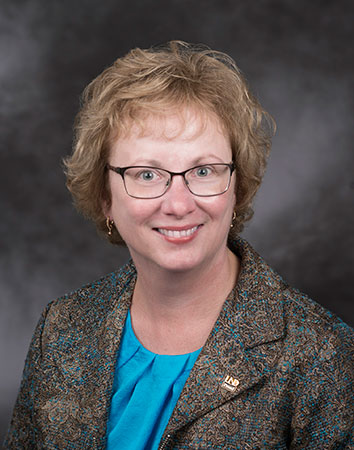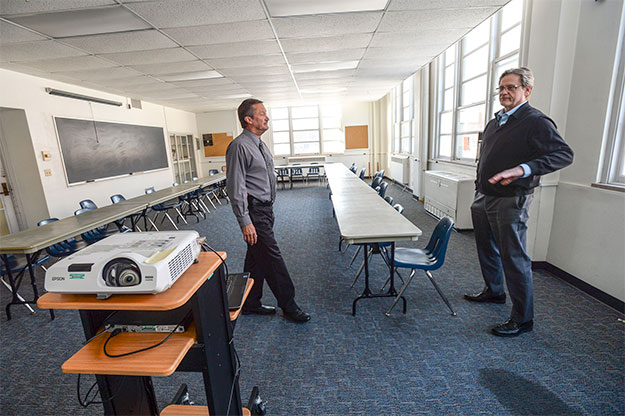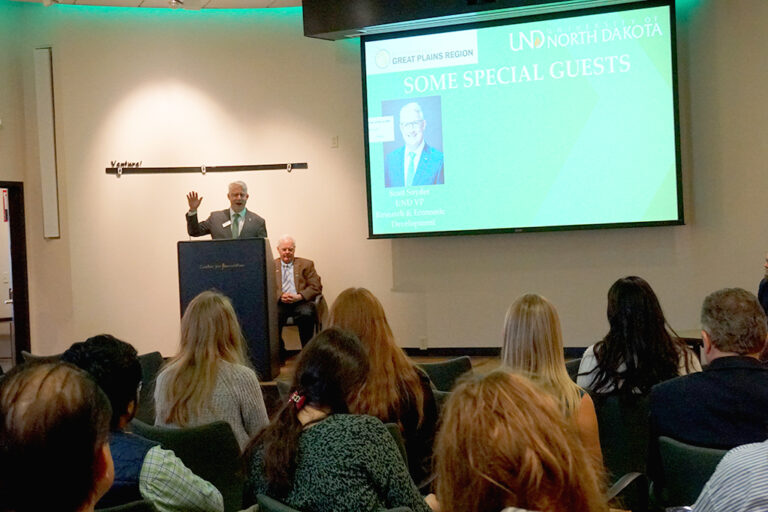Revamp and repair
UND chips away at $500 million in deferred maintenance challenge with planned renovations to O’Kelly and Merrifield Halls

The striking Collegiate Gothic design style found on the exterior of O’Kelly Hall has remained relatively unchanged since the building was fully erected in 1952. Its purpose — and its guts — have been evolving ever since.
Now, after some years of interior aging, the University of North Dakota is teaming with the state to invest in creating new and innovative learning spaces within those gothic walls.
“There really haven’t been any changes to that building since the medical school moved out 25 years ago,” said Mark Johnson, UND facilities director of operations and maintenance. “We do our best to keep it painted, clean and functional, but it just has not been brought up to the 21st century. So this is exciting.”
The lower level and first floor of O’Kelly Hall are part of a $7 million renovation project that began last year and is set to conclude in August. Much of those funds are going toward updating 10 O’Kelly classrooms and learning spaces with state-of-the-art technology, as well as new paint, carpet and furniture. Other funds will be used for Information Technology upgrades in nearby Merrifield Hall.

Dual purpose
There’s a dual outcome to these renovations. Students are getting an updated space, but in the process campus planners are also taking a chunk out of the building’s $18 million worth of deferred maintenance issues — including plumbing, HVAC, and a fire-rated stairway.
“When we can combine them, and do certain things deferred maintenance-wise and improve the learning environment — that’s a win-win. O’Kelly Hall is a classic example of that,” Johnson said.
Officials have estimated UND faces a projected $500 million in combined deferred maintenance costs involving various buildings on campus.

UND Vice President for Finance and Operations Alice Brekke said that load will demand a multi-faceted solution over the next 10 years.
“There are probably six pieces that we’ll have to continually work to get that number down, including state funding, public/private partnerships and taking buildings offline,” Brekke said. “If there’s matching money, the state has a little skin in the game as well, and we have to show them the other ways in which we’re going to help make this happen.”
UND Facilities is consistently working with designers to balance visual and digital updates with deferred maintenance remedies.
“We say, ‘If you’re going to update the technology in this room, you’re also going to have to update the electrical panels, because you don’t have the electrical capacity in a 1950s building to support all of the technology upgrades that you’re trying to do to make it a 2017 building,’” Johnson explained. “A little piece of that pie has to be used for that.”
Johnson says that as renovations continue, more infrastructure will be updated throughout the building. When the time comes to move forward with possible renovations to the third and fourth floor, those deferred maintenance issues will already be taken care of. That means more money can be put toward environmental and technology updates for students.
The planned O’Kelly Hall renovations also will include a Math Active Learning Laboratory (MALL), in which students from all majors can access individualized math help and resources.
UND College of Arts and Sciences Dean Debbie Storrs, one of many who helped visualize the MALL with Math faculty, says it was important to invest in the laboratory for the sake of all UND students — not just math majors — as basic math courses are required to move forward in most programs.
Smart spending
The cost of the current renovations are being covered, in part, with $2.3 million from the state-allotted extraordinary repairs fund. That money can only be used if UND uses $4.7 million of internal funds — in this case, from student technology fees, telecommunication fees, appropriated funds, etc. — to create a 2-to-1 match.
The match model began in the 2015-2017 biennium. The requirement has helped the University make the most of its resources.
“It forces a discipline in putting money into buildings, which is what they’re trying to do,” Brekke said.

As Johnson reflects on the work that has been done on O’Kelly Hall, he can’t help but look to the future.
“I think you’ll find in the fall, when you go to ground floor and first floor, and then you go to second and third, it will be like a before-and-after photo. And you’ll say, ‘‘We have to get the money and finish this,’” he said. “It’s an investment. It’s not just a gift. If the state gives us the dollars, we’ll invest other dollars, and it will help improve the University.”
Storrs agrees, and asserts that UND and other state campuses are prioritizing where to use their money with a guiding force in mind.
“Students in North Dakota are our future,” Storrs said. “As an institution, we must align ourselves with what President Kennedy refers to as the ‘digital wave.’ Institutions that fail to keep up our own technology infrastructure and that do not provide students with technological skills are doing a disservice to them.”


